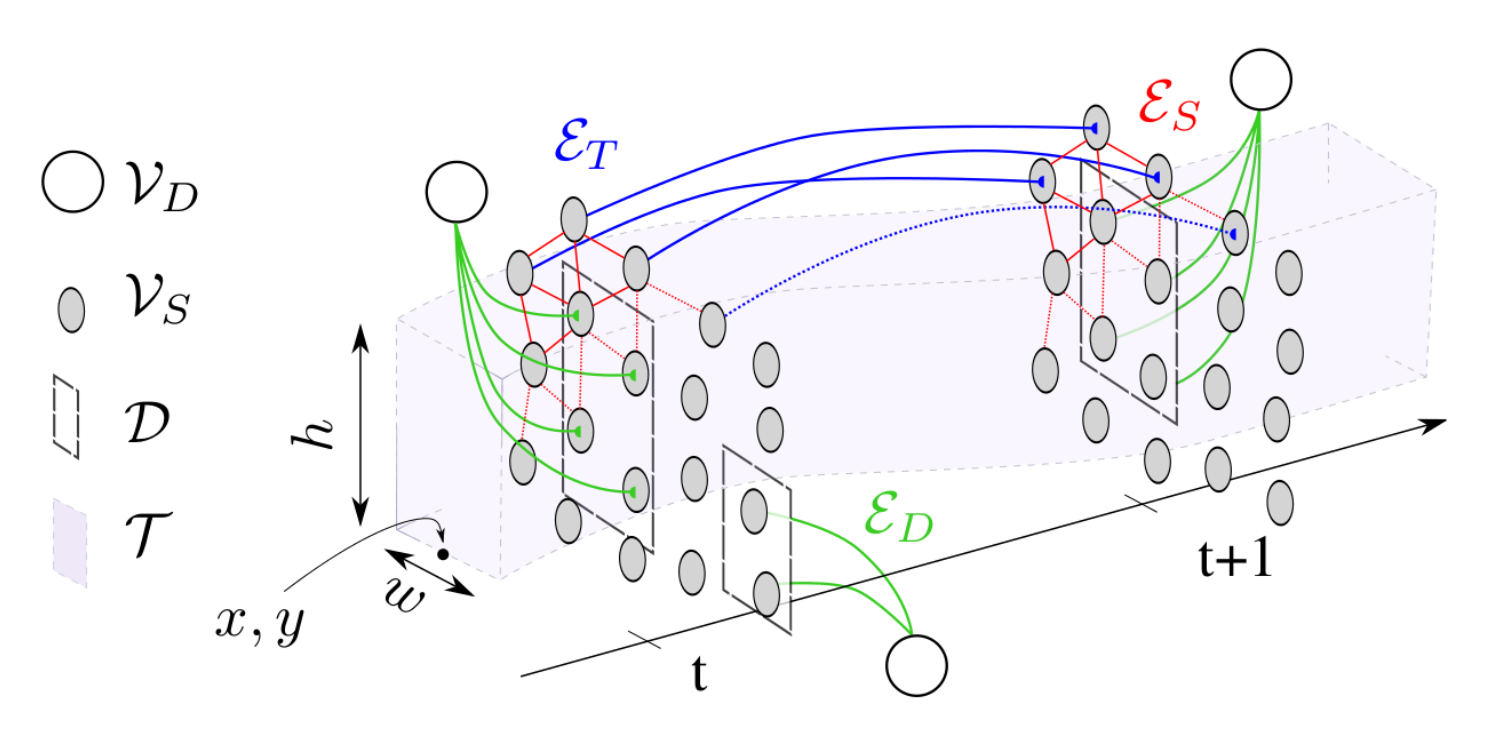
TITLE: Joint Tracking and Segmentation of Multiple Targets
AUTHOR: Milan, Anton and Leal-Taixe, Laura and Schindler, Konrad and Reid, Ian
FROM: CVPR2015
CONTRIBUTIONS
- A new CRF model taking advantage of both high-level detector responses and low-level superpixel information
- Fully automated segmentation and tracking of an unknown number of targets.
- A complete state representation at every time step could handle occlusions
METHOD
- Generate an overcomplete set of trajectory hypotheses.
- Solve data association problem by optimizing an objective function, which is a multi-label conditional random field (CRF).
SOME DETAILS

The goal is to find the most probable labeling for all nodes given the observations, which is equivalent to
in which
where (phi^{large{nu}{S}}) and (phi^{large{nu}{D}}) are unary potential functions for superpixel and detection nodes, respectively, measuring the cost of one detection node in (large{nu}{D}) or one superpixel node in (large{nu}{S}) belonging to a certain target; (psi(v,w)) is pairwise edges among superpixels and detections, including spacial and temporal information among superpixels and information among superpixels and detections in the same frame; (psi^{lambda}) is trajectory cost, containing several constrains of height, shape, dynamics, persistence, image likelihood and parsimony.
ADVANTAGES
- Taking pixel (superpixel) level information in addition to detection results into consideration could handle partial occlusions, which would lead to higher recall.
- Segments could provide considerable information even no reliable detection result exists.
- Modeling multi-targets tracking problem to graph model could take advantage of existing optimization algorithms.
DISADVANTAGES
- Solving CRF problem is slow, needing 12 seconds per frame.
- Can not handle ID switch in two adjacent temporal slidewindows.
OTHER
- Tracking-by-detection has proven to be the most successful strategy to address multi-target tracking problem.
- Noise and imprecise measurements, long-term occlusions, complicated dynamics and target interactions all contributes to the problem’s complexity.




近期评论